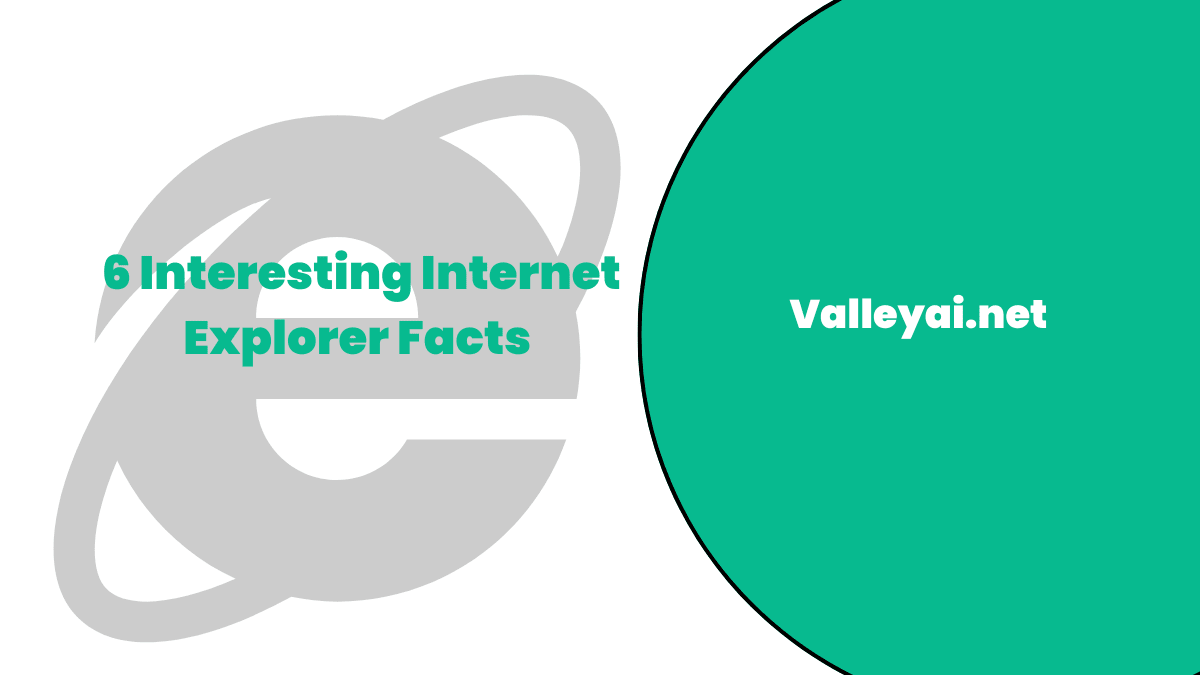Internet Explorer (IE), developed by Microsoft, was one of the most widely used browsers during the early days of the Internet. It introduced features like multimedia content viewing, website access, and online interaction, shaping how users engaged with the modern internet. Despite its success, IE faced browser criticism due to security vulnerabilities and a lack of support for modern web standards, leading to its eventual discontinuation.
After 27 years, Microsoft replaced IE with Microsoft Edge, a new browser designed to meet modern technology needs. As a legacy browser, Internet Explorer remains significant in browser history, marking a milestone in online applications, navigation features, and user interaction. Its pause in work symbolized the end of an era and the transition to more secure and updated solutions for the modern internet.
Significance of Internet Explorer Today
Internet Explorer is a significant part of today’s internet browsers. It was first released in 1995 by Microsoft and quickly became the most popular browser in the world. Today, Internet Explorer is still used by millions of people around the globe.
While it is not as popular as it once was, it remains an essential browser for many reasons. First, it is one of the most compatible browsers with older websites. This means that if you need to access a more senior website, you will likely need to use Internet Explorer.
Additionally, Internet Explorer is still the default browser on many computers, especially those running older versions of Windows. iOS typically does not have this browser. You will need to know how to install Internet Explorer on Mac manually.
Finally, while many newer and more advanced browsers are available, Internet Explorer still has a loyal user base that appreciates its simplicity and reliability.
History and Timeline of Internet Explorer
The history of Internet Explorer began with its first release in 1995 as a part of the Microsoft Windows 95 operating system. IE1 was a 16-bit application bundled with Windows 95 to provide users with a graphical web browser. The next major release of IE, IE2, was released in 1996 and included support for Java applets, frames, and cookies.
Read also: Brief History of Robots
IE3 was released in 1997 and included several new features, such as advanced support for cascading style sheets (CSS) and digital certificates. The 1998 release of IE4 featured better security and support for dynamic HTML (DHTML). IE5, released in 1999, was the first version of IE to achieve widespread use, mainly due to its inclusion in Windows 98.
IE6, released in 2000, became the most popular version of IE, with over 90% market share. It was mainly due to the popularity of IE6 that Microsoft was able to maintain a dominant market share in the web browser market. However, as new versions of Firefox and Chrome were released with better features and performance, IE’s market share began to decline.
In 2011, Microsoft released IE9, which featured a new interface and improved performance. However, it failed to recapture significant market share from Firefox and Chrome. In 2012, Microsoft released IE10, which included better support for HTML5 and CSS3. However, it again failed to gain significant market share.
Internet Explorer worked great with satellite internet. In fact, it was one of the only browsers that satellite internet users could rely on for a consistent and smooth gaming experience.
In 2013, Microsoft announced that they would be discontinuing the development of Internet Explorer 8, 9, and 10 in favor of a new browser known as Edge. Edge is based on Chromium and includes many of the same features as Chrome but with added support for Windows 10 features such as Cortana.
Interesting Internet Explorer Facts
The JScript
Microsoft’s first two versions of Internet Explorer did not make as big a dent in web browsing as Microsoft would have liked. It was only with version 3, released in 1997, that turned out to be their hit, bringing us all into one household name–Internet Explorer.
The main reason? Well, you can thank those pesky Netscape Navigators for this one because they were having trouble keeping up under pressure from internet explorer, who had designed an early reverse-engineered model called “Jscript,” which became very popular among many people at once.
Strategy
Because Microsoft wanted people to use Internet Explorer more, they made it difficult for them if they wanted to uninstall the browser.
With such an integrated relationship between Windows and IE, uninstalling this program would slow down your computer or cause problems with other programs that use its located onboard functions, like media streaming websites.
The Case
Microsoft had its share of setbacks in the early days. It was sued for maintaining an unlawful monopoly on PC hardware.
Though they were found guilty by a judge who ordered them to break up into two units – one dedicated solely towards developing operating systems (which later became Windows), while another would work exclusively with software components- this order wasn’t carried out due court orders that cited “overriding institutional interest.”
Free Browser
Browsers were not always free. People had to buy this software. Microsoft integrated Internet Explorer into Windows and made Internet Explorer free to download. All the other competitors tried to run along with it but mostly failed.
Blue Screen of Death
In its 4th version, internet explorer introduces the blue screen of death. If you type “about Mozilla,” a blue screen appears with a Windows system crash. It was just to pick on Netscape Now.
The Browser You Love to Hate
In 2012, Microsoft commissioned a group of artists and designers to create an entertaining video titled “The Browser You Loved To Hate.” The company used its product as the butt-of funny jokes about its performance issues. It also poked fun at how old it was because, back then, nobody knew what Chrome or Firefox were doing.
This has since become one big meme involving memes being created from this event which is now entertained across different platforms.
Final Thoughts
Even though it isn’t the most used browser, Internet Explorer still has a place in history. It was the first big market player and helped shape how we browse the internet today.
While it may not be as popular as it once was, it is still used by millions worldwide. Thanks for reading. We hope you find these facts interesting.
Admin
My name is Kaleem and i am a computer science graduate with 5+ years of experience in AI tools, tech, and web innovation. I founded ValleyAI.net to simplify AI, internet, and computer topics while curating high-quality tools from leading innovators. My clear, hands-on content is trusted by 5K+ monthly readers worldwide.

